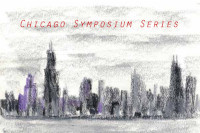American Association of Physics Teachers
The Association of American Medical Colleges has revised the Medical College Admission Test (MCAT). The new version will be offered for the first time in March 2015. Based on recommendations from a committee of medical school faculty, admissions officers, deans, and undergraduate science and social science faculty members, surveys of medical school faculty and staff, medical school students, and undergraduate science faculty members, the new MCAT will focus on testing pre-medical students' competencies in the natural sciences, behavioral and social sciences, and critical thinking and reasoning. In this talk, I will focus on changes in the natural sciences part of the MCAT and the implications of those changes for undergraduate science and mathematics education.
Dr. Robert Hilborn is the Associate Executive Director of the American Association of Physics Teachers (AAPT). He has held physics faculty positions at Oberlin College, Amherst College, the University of Nebraska-Lincoln, and the University of Texas at Dallas. At the Association of American Medical Colleges (AAMC) he has served on the AAMC-HHMI Committee on the Scientific Foundations for Future Physicians and on the MCAT review committee, MR5.
He has also served as a member of the advisory committee for the Mathematical and Physical Sciences Directorate of the National Science Foundation. He has served on the governing boards for the College of Science, Engineering, and Technology at Jackson State University and the American Institute of Physics. He was founder and chair of the National Task Force on Undergraduate Physics. He has been awarded the 1997 American Physical Society Prize to a Faculty Member for Research in an Undergraduate Institution and the 1999 American Association of Physics Teachers Distinguished Service Citation. He was a Senior Physics Fellow for College and University Programming at AAPT and is a fellow of the American Physical Society.
Dr. Hilborn earned his doctorate in physics from Harvard University. His research includes work in experimental and theoretical atomic, molecular, and optical physics, and in nonlinear dynamics. He has authored Chaos and Nonlinear Dynamics (Oxford University Press, 2nd Ed., 2000) and his recent work has focused on applying nonlinear dynamics to analyze problems in neuroscience and the dynamics of genetic networks.

